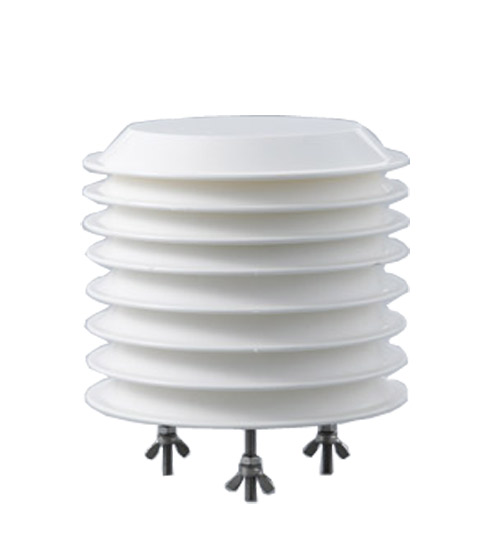

— Blogs —
—Products—
 Consumer hotline +8618073152920
Consumer hotline +8618073152920 WhatsApp:+8615367865107
Address:Room 102, District D, Houhu Industrial Park, Yuelu District, Changsha City, Hunan Province, China
Product knowledge
Time:2024-03-24 19:41:11 Popularity:1665
Weather instruments are tools used to measure various atmospheric parameters and environmental conditions. These instruments help meteorologists, researchers and individuals collect data to monitor weather patterns, predict changes and understand climate trends. Following are some of the common meteorological instruments and their functions.
| Measured | Measuring range | Resolution | Precision |
| Humidity | 0~100%RH | 0.1%RH | ±0.5℃ |
| Temperature | -40~80℃ | 0.1℃ | ±5%RH |
| Atmospheric pressure | 10~1200hPa | 0.1hPa | ±1.5hPa |
| Soil temperature | -40~80℃ | 0.1℃ | ±0.5℃ |
| Soil Humidity (moisture) | 0-100%RH | 0.1%RH | ±5%RH |
| Conductivity | 0-10000us/cm | 1us/cm | ±5% |
| Wind speed | 0~70m/s | 0.1m/s | ±(0.3+0.03V)m/s |
| wind direction | 0~360° | - | ±3° |
| Illuminance | 0-200000Lux | - | ±7% |
| Rainfall | 0-4mm/min | 0.2mm | ±4% |
| Solar radiation | 0~2000W/m2 | - | ≤5% |
| CO2 | 0~2000ppm | 1ppm | ±7% |
| Supply mode | 220V | DC12-24V | solar power optional |
 |  |  |  |  |
| Anemometer Wind Speed sensor | Wind direction sensor | Tipping bucket rain gauge sensor | Tipping bucket rain gauge sensor | Piezoelectric Rain Gauge |
 |  |  |  |  |
| Atmospheric Temperature Humidity air pressure Sensor | ultrasonic wind speed and direction sensor | 5 in1 Ultrasonic Weather Station Sensor | 6 in1 Ultrasonic Weather Station Sensor | 7 in1 Ultrasonic Weather Station Sensor |
 |  |  |  |  |
| Carbon dioxide sensor | Solar Radiation Sensor | Photosynthetically Active Radiation Sensor; | illumination sensor | Soil Moisture Temperature sensor |
Weather instruments are devices that are used to measure various atmospheric conditions. These instruments are essential for meteorology, climatology and understanding the weather. Some of the common meteorological instruments are listed below.
1. Thermometers : - Measurement of air temperature.
-Measures air temperature, which is a fundamental weather parameter that affects the formation of weather phenomena and human comfort.
Types include liquid-in-glass thermometers, digital thermometers and infrared thermometers.
2. :Barometer
-Measures atmospheric pressure, which can indicate changes in weather, especially the proximity of low-pressure systems (storms) and high-pressure systems (clear weather).
-Types include mercury barometers, barometer-less barometers, and digital barometers.
3. Hygrometer or hygrometer.
-Measures the humidity of the air.
-A hygrometer consists of a dry bulb thermometer and a wet bulb thermometer to determine relative humidity.
4. Anemometer : - Measures wind speed and direction.
-Measures wind speed and direction.
-Types include cup anemometers, vane anemometers and sonic anemometers. 5.
-Show the direction of the wind. They work with anemometers to provide information about wind speed and direction.
-Usually mounted on high poles or structures for accurate readings.
6. Rain Gauge : -Measures the amount of precipitation (rainfall).
-Measures the amount of precipitation (rainfall or snowfall).
-Types include standard rain gauges, tipping bucket rain gauges and weighing rain gauges.
7. Weather Station.
-An integrated system of multiple meteorological instruments that monitor various weather parameters simultaneously.
-Includes temperature, humidity, pressure, wind speed, wind direction and sometimes solar radiation sensors.
8. Solar Intensity Meter : - Measures solar radiation or sunlight intensity.
-Measures solar radiation or sunlight intensity.
-Used in meteorology, climatology and solar applications.
9. Cloud Meter : -Measures cloud height and vertical energy.
-Measures cloud height and vertical visibility.
-Commonly used for aviation safety at airports.
10. Spectrometer : -Measurement of light from the sun or other light sources.
-Measures the spectral distribution of irradiance (light intensity) from the sun or other light sources.
-Can be used to study atmospheric composition and solar radiation.
11. Satellite Meteorological Instruments: These include radiometers, spectrometers and other sensors mounted on meteorological satellites to measure various atmospheric properties such as temperature, cloud cover and sea surface temperature.
12. LIDAR (Light Detection and Ranging): Uses laser pulses to measure distances and map features, and can be applied to the study of cloud cover and other atmospheric structures.
13. Sondes: Instruments that measure the distribution of atmospheric temperature and humidity by transmitting radio waves and measuring the absorption of radio waves by water vapour and other atmospheric gases.
These instruments provide the data needed for weather forecasting, climate studies and environmental monitoring. These meteorological instruments are essential for monitoring and recording a wide range of atmospheric parameters, providing valuable data for weather forecasting, climate research, agriculture, aviation, and many other areas that rely on accurate weather information. With advances in technology, many of these instruments are now smaller, more accurate and able to provide real-time data, which greatly improves our understanding and prediction of weather and climate.
Related recommendations
Sensors & Weather Stations Catalog
Agriculture Sensors and Weather Stations Catalog-NiuBoL.pdf
Weather Stations Catalog-NiuBoL.pdf
Related products
 Combined air temperature and relative humidity sensor
Combined air temperature and relative humidity sensor Soil Moisture Temperature sensor for irrigation
Soil Moisture Temperature sensor for irrigation Soil pH sensor RS485 soil Testing instrument soil ph meter for agriculture
Soil pH sensor RS485 soil Testing instrument soil ph meter for agriculture Wind Speed sensor Output Modbus/RS485/Analog/0-5V/4-20mA
Wind Speed sensor Output Modbus/RS485/Analog/0-5V/4-20mA Tipping bucket rain gauge for weather monitoring auto rainfall sensor RS485/Outdoor/stainless steel
Tipping bucket rain gauge for weather monitoring auto rainfall sensor RS485/Outdoor/stainless steel Pyranometer Solar Radiation Sensor 4-20mA/RS485
Pyranometer Solar Radiation Sensor 4-20mA/RS485
Screenshot, WhatsApp to identify the QR code
WhatsApp number:+8615367865107
(Click on WhatsApp to copy and add friends)